Gallery show awakens post-Covid possibilities
Arresting artworks inspired by the ‘wake-up call’ of Covid-19 are the focus of a University exhibition that addresses pressing global concerns.
Key themes in The Normal, which takes place at the Talbot Rice Gallery, include the pandemic’s impact on communities, health, work, nature and even ideas about progress.
Talbot Rice Director Tessa Giblin says The Normal affirms the urgent need for people to rethink their relationship to the natural world.
The presentation of 21 works brings together acclaimed artists from around the world who are attuned to this singular moment in history.
The exhibition runs from 18 May until 29 August 2021. Visitors must book a ticket in advance.
Book your ticket now
Talbot Rice Gallery presents 'The Normal', an exhibition of contemporary art developed in response to the loud wake-up call of the pandemic.
Admission Free. 18 May until 29 August 2021.
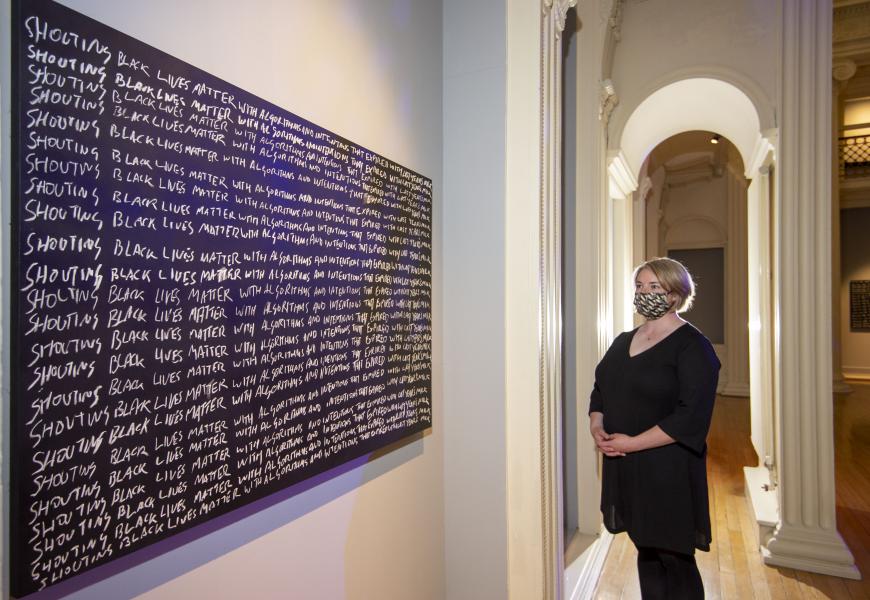 `
` 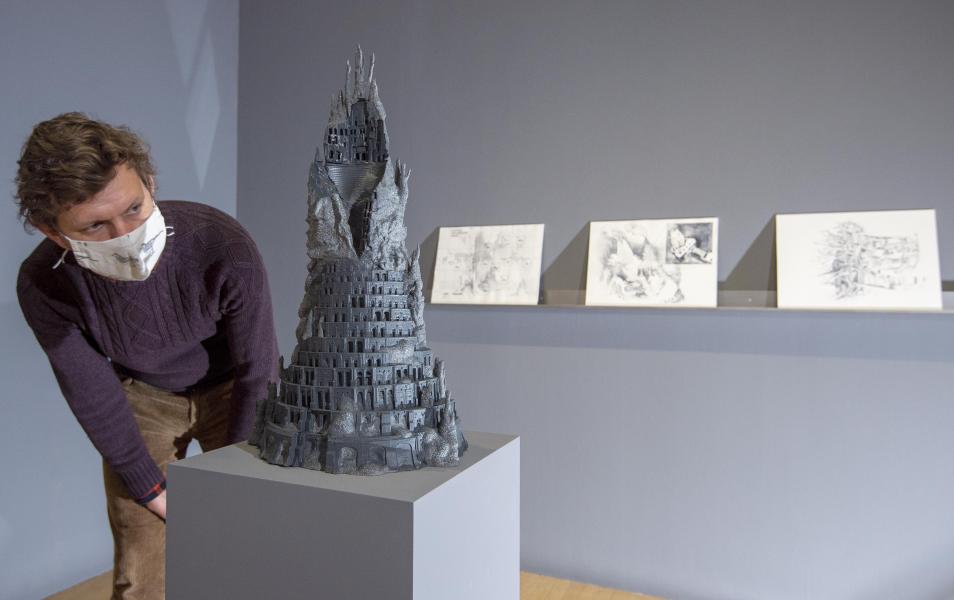 `
` 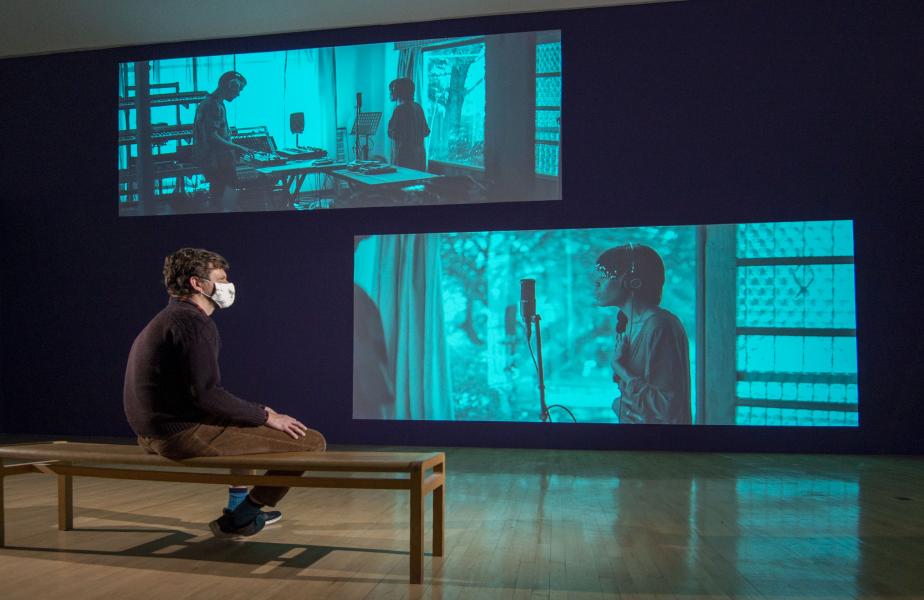 `
` 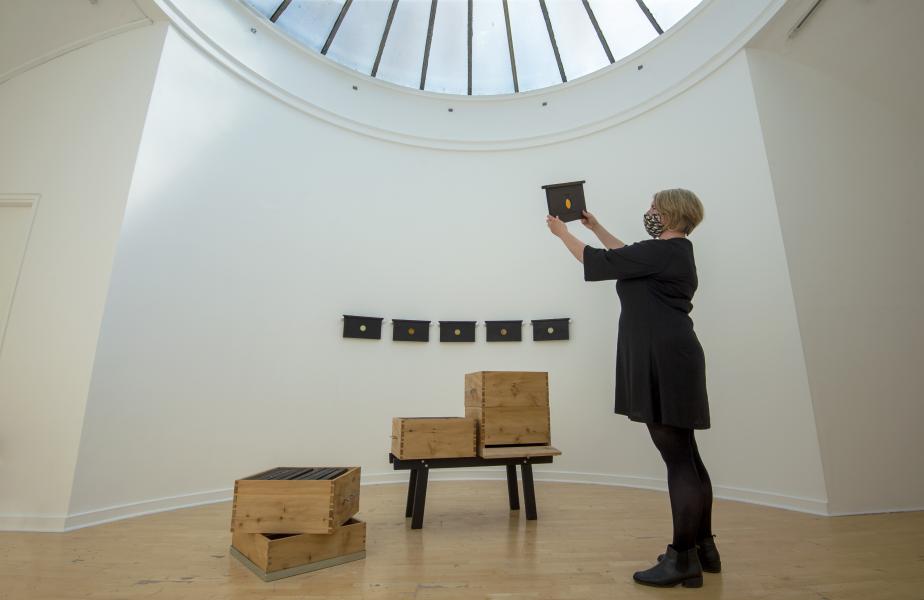 `
` 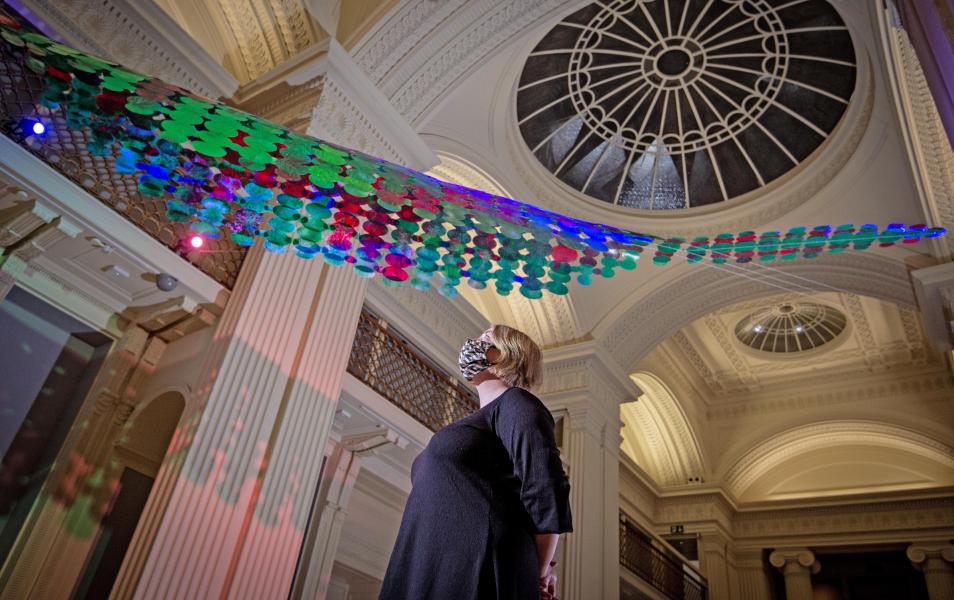 `
` 




Stellar line-up
Taking part are Larry Achiampong, Amy Balkin, Anca Benera and Arnold Estefan, Boyle Family, Alexandra Daisy Ginsberg & Sascha Pohflepp, Gabrielle Goliath, Femke Herregraven, Jarsdell Solutions Ltd, Kahlil Joseph, Tonya McMullan, Sarah Rose and James Webb.
The Normal seeks to address how our laws, histories and communities are entangled with viruses, ecosystems and each other. The exhibition, Ms Giblin says, foregrounds the role that art plays in envisaging different relationships to worlds that have yet to emerge.
Larry Achiampong’s ongoing Detention Series sees punishment exercise lines, inspired by memes and trending hashtags, written on classroom blackboards – highlighting the artist’s view that anti-racism is not something to be picked up and dropped in a fickle moment.
People’s Archive
A People's Archive of Sinking and Melting by Amy Balkin and others is a poignant, evolving record of the approaching threats posed by climate change. Talbot Rice Gallery is adding to the archive by inviting submissions from across Scotland, before and during the exhibition.
Anca Benera and Arnold Estefan’s new commission was produced at the Gallery and Edinburgh College of Art. It includes new commission includes a 3D printed sculpture that brings together the form of a deep-sea hydrothermal vent with the Tower of Babel from the book of Genesis – reflecting the artists’ concerns about human encroachment upon nature.
The London-based collaborative Boyle Family include work that pioneered a way of mapping social density - using what was, in the 1970s, the latest computer technology. Suggestive of heat maps, their work bridges visual and scientific domains.
The convention of the dedication song is reimagined in Gabrielle Goliath’s video and sound installation This song is for … Each piece is dedicated to, and chosen by, a survivor of rape, and features a recurring sonic disruption to create a space for reflection.
Future catastrophe
Alexandra Daisy Ginsberg & Sascha Pohflepp’s botanical drawings look to a future when catastrophe has led to the use of biotechnologies to grow components in plants. Growth Assembly speaks of colonialism, objectification and misguided relationships to nature.
Femke Herregraven’s work reflects her research into the long and entwined relationships between capitalism and disease. Her work not only reminds us that the bubonic plague continues today, but also reveals the inequity of capitalist responses to humanitarian crises.
Filmmaker and video artist Kahlil Joseph presents BLKNWS. This ever-evolving news-style broadcast proffers a montage of art, music, memes and reportage that presents a positive portrayal of African-American experiences – constantly updating to reflect our changing world.
Tonya McMullan collected multiple honey samples during lockdown, in colours ranging from creamy white to molasses black. McMullan worked with the University’s Roslin Institute to create vibrant, microscopic images of pollen in the honey, which present an alien picture of Edinburgh’s diverse ecology.
Plastic waste
Talbot Rice Gallery’s resident artist Sarah Rose explores the re-use of plastic waste – a continuing focus in her practice. Rose’s work is both critical of the recycling industry yet also reflects a fascination for its lifesaving properties, intrinsic beauty and links to a fossilised pre-history.
A new video by the Jarsdell Solutions Ltd collective emphasises the entanglement of humans, animals and environments. It references ‘King Rat’ – a natural phenomenon, once a harbinger of bad luck, in which groups of rats become knotted together for life by their tails.
In There's No Place Called Home, James Webb surreptitiously installs foreign birdsong into the Royal Botanic Gardens, to offer a dialogue about globalisation, migration and territory. It resonates with the resurgence of birdsong in urban spaces that were unmuted by lockdown.
Impact explored
Tessa Giblin says that The Normal explores the pandemic’s impact from a variety of angles, including a re-engagement with the natural world.
It also probes viruses’ symbiotic relationship to evolution, the socio-economic and racial inequality the virus has exacerbated and the possibility of stepping off the train of progress.
The Talbot Rice Gallery Director says: “The Normal touches on the very human experiences we have collectively encountered during lockdown, while holding out hope that this ever-increasing proximity to viruses – this horrible awakening – will all lead to change.”
The Normal is generously supported by Creative Scotland.
Related links
The Normal: Exhibition ticket booking
Images by Neil Hanna Photography

